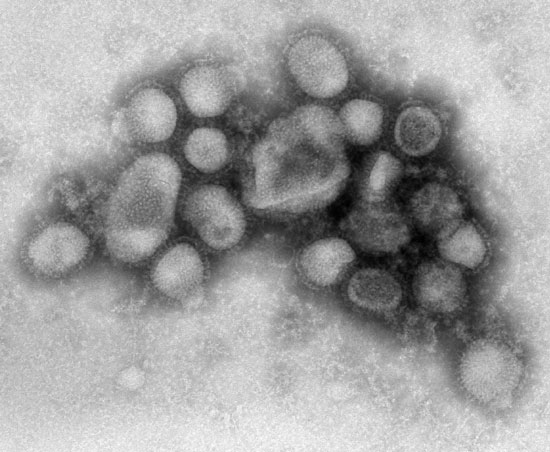Detection of H1N1 flu virus in animals
Scientific experts at the University of California, Los Angeles - UCLA and its colleagues discovered the first evidence of the H1N1 virus in animals in Africa.
>>>New virus strains from swine flu virus, bird flu
In a village in northern Cameroon, about 89% of the pigs studied have resulted in infection with the H1N1 flu virus.
Thomas B. Smith of the Center for Tropical Research at the University of California, the lead author of the study, said: 'I was surprised to see almost all pigs in this village were infected with the virus. Africa is the beginning of a new pandemic. There are many people in poor health, and diseases can spread very quickly without the authorities knowing about it. '

About 89% of African pigs studied were infected with the H1N1 flu virus
H1N1 caused a pandemic in humans in the spring of 2009, over 200 countries. According to statistics from the Centers for Disease Control in the US, an estimated 60 million people are infected, 270,000 are hospitalized and 12,500 are fatal. The virus, the scientific name for influenza A (also called H1N1), is made up of genetic factors between flu viruses in pigs, bird flu and humans. The pigs in Cameroon are infected from humans, the researchers said.
Kevin Njabo, a research specialist at the Department of Biology at the University of California, director of UCLA's Tropical Research Center, said.'I was shocked when I found out it was the H1N1 virus. Any virus in this world can spread to another continent within a few days via air travel. We need to understand where the virus originated, and how it spreads, so we can thoroughly eliminate the virus before it spreads. We have to be prepared for a pandemic, but there are too many countries that have not carefully prepared this problem, even the US '.
Scientists used diagnostic tests called ELISA - a type of enzyme-linked immunoassay - to test potential viruses . The ELISA indicates that these pigs have human strain of H1N1 virus.
Swine viruses can be mixed into a much more dangerous strain, which can spread rapidly, Smith and Njabo warned.
'We are studying the common surface between viruses in humans, wildlife and cattle and how viruses move between these objects,' Njabo said.
"This particular H1N1 virus appears everywhere ," said Professor Smith from the University of California. 'When different strains of influenza virus are mixed into pigs, such as the strain of bird flu plus human viruses, you can get new strains of hybrid viruses that can affect people more seriously and possibly creating pandemic leading to human-to-human transmission. '
Smith and Njabo noted that, in the 20th century, the world experienced three pandemic influenza events, resulting in a total of more than 40 million deaths.
In addition to studying pigs, Njabo and his colleagues collected samples from hundreds of wild birds, ducks and chickens in Cameroon and Egypt to study. Their associates are also conducting similar studies in China, Bangladesh and elsewhere. Smith and Njabo and the Global Biology Laboratory of the University of California and Professor Hilary Godwin of the University of California School of Public Health have teamed up to identify novel diseases, speed up develop new vaccines and try to prevent the next pandemic.
- The second patient in the South died of H1N1 flu
- When has the H1N1 flu virus been known?
- H1N1 flu broke out in the Mekong Delta
- Detection of ebola virus in pigs
- Clothes against H1N1 flu
- Vaccination against H1N1 can cause neurological disorders
- HCM City's first patient infected with H1N1 flu
- Influenza A / H1N1 outbreak in many parts of the world
- Influenza A / H1N1 virus does not
- Virus A / H1N1 is increasingly dangerous
- Influenza A / H1N1 virus
- A / H1N1 virus spread due to ... negligence in vaccine manufacturing?
 March 2012: Launching H5N1 vaccine for poultry
March 2012: Launching H5N1 vaccine for poultry Experts comment on the mysterious gradual disappearance of the Delta variant in Japan
Experts comment on the mysterious gradual disappearance of the Delta variant in Japan Danger of the two Delta . branch variants
Danger of the two Delta . branch variants 2020 pandemic flu attack humans?
2020 pandemic flu attack humans?